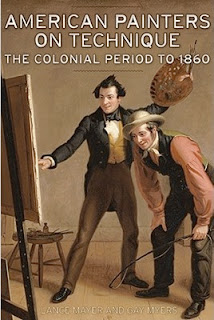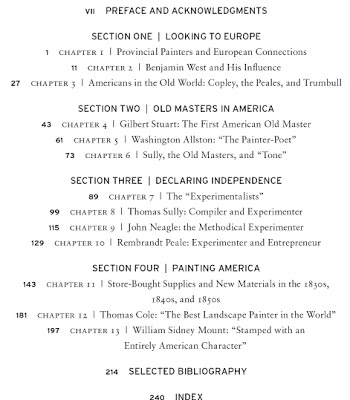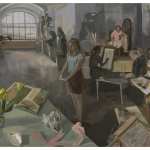Back in Colonial times, before bottles of medium and tubes of premixed paint were readily available in the local art supply store, painters were like mad scientists, grinding pigments and developing secret methods that would make their paintings more lifelike, stable and, thus, more sought after. For early American artists, painting was a competitive business, and over time, some artists’ recipes and methods have fared well, while others have led to cracking and discoloration. Curators Lance Mayer and Gay Myers, who have been collecting recipes and stories from journals, letters and old painting manuals for the past twenty-five years, have recently published American Painters on Technique: The Colonial Period to 1860, a wonderful book, rich with practical information and lively anecdotes about painters such as Thomas Cole, Gilbert Stuart, Thomas Sully, and Rembrandt Peale.
Here’s an excerpt:
Thomas Cole’s correspondence also indicates he knew that a period of time should elapse before varnishing, which was one reason that he needed to discuss the topic–he had the awkward job of explaining why their pictures did not look as good as they would eventually look after they were varnished. Ridner said Cole varnished his paintings “as soon as they became perfectly dry,” which is not very specific. Mount said that Cole “did not varnish in under a year,” but this may have been a theoretical goal rather than his actual practice; the testimony of Cole’s letters hint that he was not so dogmatic. Cole himself described working on a painting until the last minute before an exhibition, and he variously told patrons that paintings recently sent to them should remain unvarnished “a short time” or “one month longer.” Of course, once a painting was sent to a patron, varnishing was out of the hands of the artist and the new owner was free to follow or reject the artist’s advice on when to varnish, or perhaps never to varnish the painting at all…
Table of Contents:
Obviously, anecdotes about painters and their techniques will not appeal
to the general reader, but for artists who still concoct their own
recipes (linseed oil? stand oil? varnish? silica? polymer?) or admire
the glazing on those incredible early American portraits and landscapes, the book, both
amusing and instructive, is a fascinating read.
American Painters on Technique: The Colonial Period to 1860, by Lance Mayer and Gay Myers, Getty Publications, 2011
——-
Subscribe to Two Coats of Paint by email.
















Maroger Oil Painting medium.. high quality, superior longevity, non-toxic..all natural.. absolutely gorgeous.
maroger medium is made with lead
Thanks for this, Sharon. Long ago I used rabbit skin glue and white lead ground to prime some masonite – those paintings remain luminous and have never cracked. But the process gave me a monumental headache.